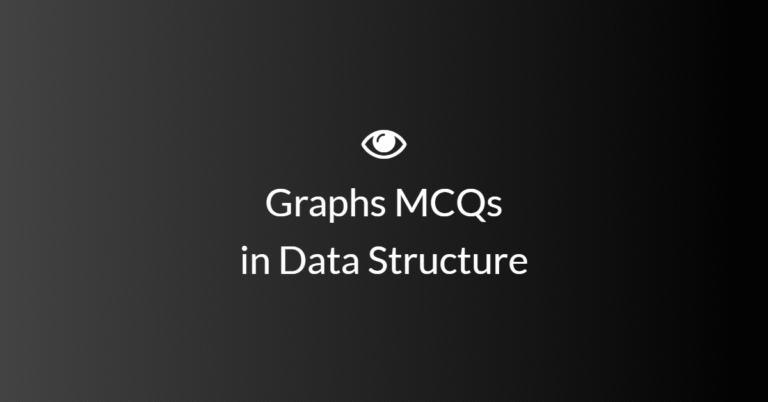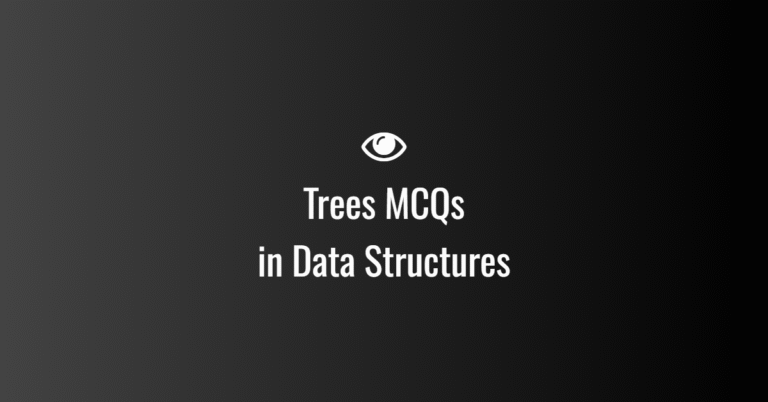1. What is the primary purpose of encryption?
a) To protect data from unauthorized access
b) To reduce data size
c) To make data readable by anyone
d) To store data securely
Answer: a) To protect data from unauthorized access
2. Which type of key is used in symmetric encryption?
a) Public key
b) Private key
c) Shared secret key
d) Session key
Answer: c) Shared secret key
3. What does decryption do to the encrypted data?
a) Encrypts the data again
b) Converts the encrypted data back to its original form
c) Transforms the data into a cipher text
d) Changes the key used in encryption
Answer: b) Converts the encrypted data back to its original form
4. In asymmetric encryption, which key is used for encryption?
a) Private key
b) Public key
c) Shared key
d) Session key
Answer: b) Public key
5. Which key is used to decrypt the data in asymmetric encryption?
a) Public key
b) Private key
c) Session key
d) Shared secret key
Answer: b) Private key
6. What is the main characteristic of public-key cryptography?
a) Both encryption and decryption use the same key
b) One key is used for encryption and a different one for decryption
c) It does not use any key
d) It relies on password-based authentication
Answer: b) One key is used for encryption and a different one for decryption
7. What is a benefit of using public-key encryption?
a) It requires less computational power
b) It simplifies key management and distribution
c) It is slower than symmetric encryption
d) It doesn’t require a key for decryption
Answer: b) It simplifies key management and distribution
8. What is the function of the private key in public-key cryptography?
a) It is used to encrypt data
b) It is used to decrypt data
c) It is used to hash data
d) It is used to generate the session key
Answer: b) It is used to decrypt data
9. Which of the following is a commonly used public-key algorithm?
a) DES
b) RSA
c) AES
d) Blowfish
Answer: b) RSA
10. In the RSA algorithm, which key is used to sign a message?
a) Public key
b) Private key
c) Session key
d) Shared key
Answer: b) Private key
11. What is the output of encryption in the encryption/decryption process?
a) Plaintext
b) Key
c) Ciphertext
d) Hash value
Answer: c) Ciphertext
12. Which of the following is true about symmetric encryption?
a) It uses a public and a private key
b) It is slower than asymmetric encryption
c) It uses the same key for both encryption and decryption
d) It requires complex key management
Answer: c) It uses the same key for both encryption and decryption
13. What does a digital signature verify in an encrypted message?
a) The integrity of the message
b) The encryption method used
c) The public key of the receiver
d) The message size
Answer: a) The integrity of the message
14. Which of the following is NOT an advantage of asymmetric encryption?
a) Public and private keys do not need to be shared securely
b) It offers stronger security than symmetric encryption
c) It requires less computational power than symmetric encryption
d) It simplifies key distribution
Answer: c) It requires less computational power than symmetric encryption
15. In which of the following encryption systems is the same key used for both encryption and decryption?
a) Public key cryptography
b) Symmetric key cryptography
c) Hashing
d) Digital signatures
Answer: b) Symmetric key cryptography
16. Which protocol uses public and private keys to secure communication over the internet?
a) HTTP
b) SSL/TLS
c) FTP
d) SMTP
Answer: b) SSL/TLS
17. What is the process of converting plaintext into ciphertext called?
a) Decryption
b) Encoding
c) Encryption
d) Hashing
Answer: c) Encryption
18. In public-key cryptography, which key is shared with others for encryption?
a) Private key
b) Public key
c) Session key
d) Secret key
Answer: b) Public key
19. What is the primary purpose of a certificate authority (CA) in public-key cryptography?
a) To generate encryption keys
b) To verify the authenticity of public keys
c) To store the private keys of users
d) To hash data
Answer: b) To verify the authenticity of public keys
20. Which of the following statements is true about public key cryptography?
a) The private key is shared openly
b) Only the public key is used for encryption
c) The same key is used for encryption and decryption
d) Public key cryptography is only used for hashing
Answer: b) Only the public key is used for encryption
21. What type of encryption is typically used to secure wireless networks?
a) Symmetric encryption
b) Asymmetric encryption
c) AES (Advanced Encryption Standard)
d) RSA encryption
Answer: a) Symmetric encryption
22. In a public-key encryption system, who holds the private key?
a) Everyone
b) The sender
c) The receiver
d) The certificate authority
Answer: c) The receiver
23. What is the primary purpose of using a session key in encryption?
a) To store the private key securely
b) To sign the message
c) To encrypt the message securely for the session
d) To hash the message
Answer: c) To encrypt the message securely for the session
24. What is used to generate a public and private key pair?
a) Symmetric encryption algorithm
b) Asymmetric encryption algorithm
c) Hashing algorithm
d) Digital signature algorithm
Answer: b) Asymmetric encryption algorithm
25. Which of the following is an example of asymmetric encryption?
a) RSA
b) AES
c) DES
d) RC4
Answer: a) RSA
26. How does public-key cryptography ensure security?
a) By using the same key for encryption and decryption
b) By using a pair of keys—one for encryption and one for decryption
c) By using a single key for all users
d) By hashing data
Answer: b) By using a pair of keys—one for encryption and one for decryption
27. What happens if the public key is compromised in a public-key cryptography system?
a) The entire system becomes insecure
b) The private key becomes ineffective
c) The encryption process is slowed down
d) Nothing happens, as public keys are not secret
Answer: d) Nothing happens, as public keys are not secret
28. In which situation is asymmetric encryption most commonly used?
a) For encrypting large amounts of data
b) For encrypting communication between two parties without prior key exchange
c) For encrypting files locally
d) For fast and efficient encryption of data
Answer: b) For encrypting communication between two parties without prior key exchange
29. What is a certificate authority (CA) used for in public-key infrastructure (PKI)?
a) To create and manage encryption keys
b) To generate session keys
c) To issue and validate digital certificates
d) To encrypt messages
Answer: c) To issue and validate digital certificates
30. Which of the following algorithms is typically used for symmetric encryption?
a) RSA
b) AES
c) Diffie-Hellman
d) ECC
Answer: b) AES



